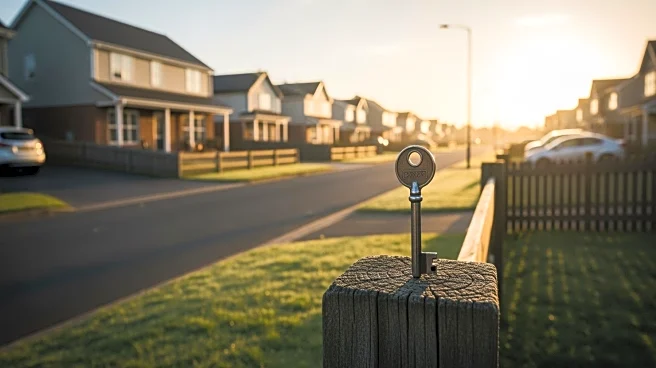What's Happening?
Realtor.com has released a list of ten metropolitan areas in the United States where the average home price remains under $300,000, providing a glimmer of hope for potential homebuyers amid a national
housing affordability crisis. The national median sales price for a home reached $415,200 in September 2025, marking the 27th consecutive month of annual price increases. Muncie, Indiana, tops the list with the lowest median home price at $178,250. Other cities include Toledo, Ohio, and Battle Creek, Michigan, where home prices are more closely aligned with local incomes, allowing typical households to afford homes. This analysis highlights areas where homeownership remains attainable despite rising mortgage rates and home prices.
Why It's Important?
The identification of these affordable cities is significant as it offers potential homebuyers options in a market where affordability has become a major issue. With mortgage rates and home prices continuing to rise, many Americans find homeownership increasingly out of reach. The cities listed by Realtor.com provide alternatives for those seeking to purchase homes without exceeding their financial capabilities. This could lead to increased demand in these areas, potentially boosting local economies and providing relief to individuals struggling with high housing costs elsewhere.
What's Next?
As the housing affordability crisis persists, these cities may experience increased interest from homebuyers, potentially leading to a rise in local real estate activity. Stakeholders, including local governments and real estate developers, may need to prepare for potential growth and address infrastructure and community needs. Additionally, policymakers might consider strategies to replicate the affordability seen in these areas across other regions, aiming to alleviate the broader housing crisis.
Beyond the Headlines
The focus on affordable housing markets highlights broader economic disparities across the U.S., where some regions offer more equitable housing opportunities than others. This could prompt discussions on housing policy reform and the need for sustainable development practices that prioritize affordability and accessibility.











